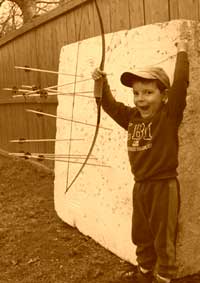In another topic a member asked me about FDCs. The specific question was "How about starting a thread on that... how you do it, how you use the info, what you've learned?"
So, I'm doing that now. Can't say as I have much light to shed on the subject but it might be fun to talk about it.
First off, How do I do it? It can be done with a simple hand drawn graph or you can use a spreadsheet in excel such as the one at this site http://www.buildyourownbow.com/tag/fdc/
The ones I'm illustrating here were done with the spreadsheet but often I do them with a sheet of graph paper as well.
Your starting draw length point is the brace height which will be zero on the pounds scale. From there you draw the bow at increasing draw lengths and record the weight off the scale. The draw intervals are your choice but the shorter the intervals the more comprehensive the FDC will be.
The spreadsheet will plot the curve for you. If using graph paper you plot the points on paper and then connect the dots/
The next question is "how do you use the info"
My use is mostly to satisfy my curiosity. I do an FDC on just about every bow I can get my hands on. but since I also build bows I do it to get an idea of what a specific design is doing.
Then there is "What have you learned?"
I'm not sure that I've learned an awful lot other than getting some ideas on what I can do to get a little more out of a design.
OTOH, I've learned that a great FDC does not always predict performance exactly. Mostly it does but because a bow has a robust curve loaded with energy doesn't necessarily mean that it will translate into speed or that it will be "accurate" or pleasant to shoot or be quiet or will be with or without hand shock. You can throw in any of the adjectives we commonly use to describe our bows and the FDC will not necessarily be predictive of it.
Other than actual measured speed most of our favorite adjectives are very subjective and personal. One shooters perfect bow can be another shooters monster.
One other point about FDCs, The area beneath the curve tells how much energy is stored in the bow at full draw. It may or may not deliver that energy with efficiency.
The bows illustrated here are not currently available commercial products so there is no risk of bashing any bowyers work [except my own :-) ].
The first illustration is of a 56" NTN bow produced in the early 50's. The only markings on this bow are etched in the aluminum riser and say 40# @ 26". One look at the FDC and you will see that the bow does not draw 40# at 26". It may have when it was built but it does not now. It's a funny looking little bow that you would immediately take for a kids bow but it is not. It has an aluminum ambidextrous riser with solid red fiberglass limbs set into pockets in the riser. The limbs are contoured like a traditional ELB.
In the early 50's my dads lemonwood bow broke during the hunting season. The only bow available in the little sporting goods store was this red bow. Dad purchased the bow and continued to hunt and took a deer with it that season. In later seasons this little bow took another deer and a bear that I know of.
This chart is a good illustration of stacking. A bow stacks when it reaches a point where the angle formed by the nock point, the limb tip and the arrow rest reach approximately 90 degrees. It's not caused by the limbs suddenly becoming stronger or more resistant to bend. It's caused by the limbs running out of an ability to bend and they are now simply advancing at the full length of the limb and mostly bending at the fades.
The sudden rapid increase in draw weight is not contributing much to the bows ability to cast an arrow. Remember that the area under the curve tells us how much useable energy is stored in the limbs. The draw force is increasing rapidly from 26" to 28" which means that there is less area under that portion of the curve. Therefore less stored energy. If this bow was drawn much beyond 28" the FDC would begin to go pretty much straight up. Eventually the tips of the limb would be pointing straight back and the string would slip out of the nocks.
So, while our archer is applying more energy to drawing the bow that last few inches, the bow is not giving much of it to the arrow. You may love your bow and it may shoot wonderfully for you, but if it stacks it is not really a fit to your physical draw length.




